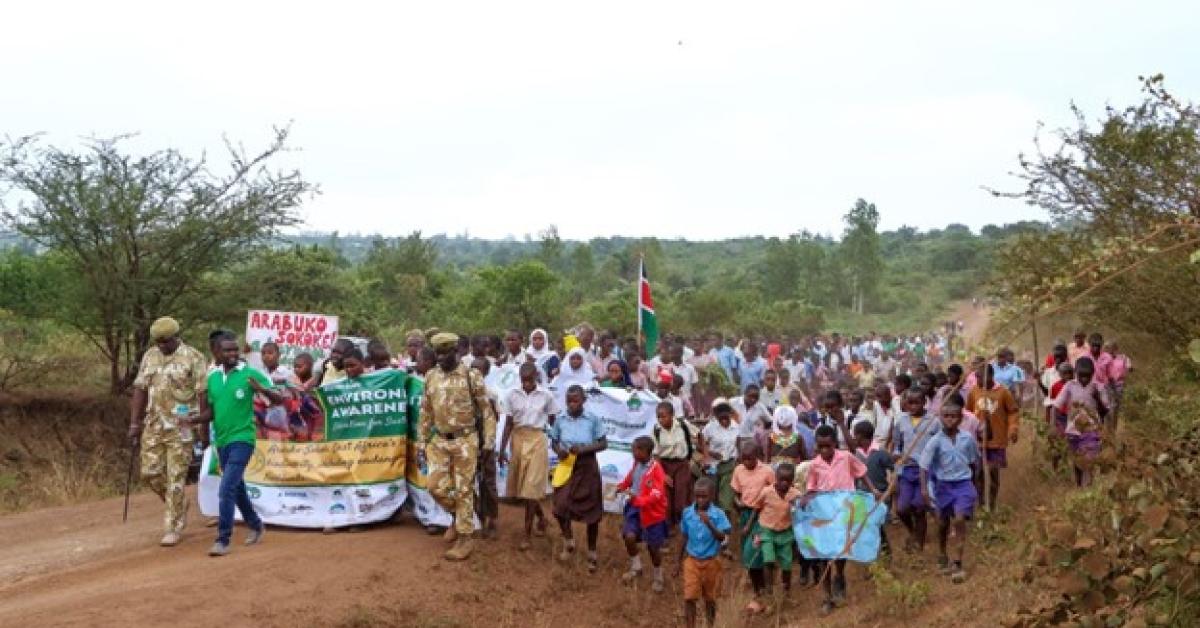
This forest is home to over 200 elephants and some of the rarest mammals, like the elusive Golden-rumped Elephant Shrew and Ader’s Duiker. Every visit is a breathtaking reminder of why this natural wonder must be preserved. Yet, with its beauty comes a responsibility—how do we ensure Arabuko Sokoke remains a thriving ecosystem for generations to come?
This question was at the heart of this year’s World Environment Education Day celebrations, as Wildlife Clubs of Kenya, Coast region together with the MAB Youth Forum members, brought the event deep into the forest, transforming it into a living classroom for conservation and environmental awareness.
The day began with an electrifying 5-kilometer awareness procession, rallying the community to recognize the importance of protecting Arabuko Sokoke and its surrounding ecosystems. Flagged off at Dida Gate by the Kenya Wildlife Service (KWS) Senior Assistant Director for the Coast Region, Adan Kala, the march started with 100 children but quickly swelled to over 600 participants, including students, teachers, rangers, and conservationists.
The sight was powerful feet stamping, dust rising, and voices uniting in chants for conservation. Alongside the marching, students collected plastic waste from roadsides, reinforcing the importance of everyday actions in environmental stewardship. The spirit of togetherness was evident, as hands joined to fight climate change through localized collective action.
The enthusiasm of young minds after a long day of celebration at Vitengeni Mixed Day and Boarding Primary School was undeniable. It was an extraordinary event; unlike anything the community had seen before. Conservationists, experts, and organizations from across the country—including Nairobi—came together to create an engaging and educational experience right in the heart of Kilifi County.
This was more than just a commemoration; it was a call to action. The central message echoed by all present was clear—conservation education must be a priority, starting with the youth. The urgency was captured through thought-provoking skits performed by students, highlighting the ignorance and indifference that often lead to environmental destruction. Through education, the dangerous notion that natural resources are infinite and can be exploited without considering future generations can be uprooted. Guided by the year’s theme, “Local Action, Global Impact,” the event emphasized that conservation starts with individuals and communities. When young children understand the importance of environmental protection, they become lifelong advocates for sustainability.
